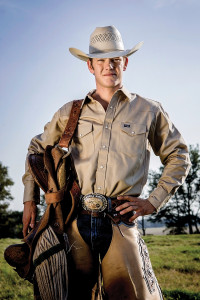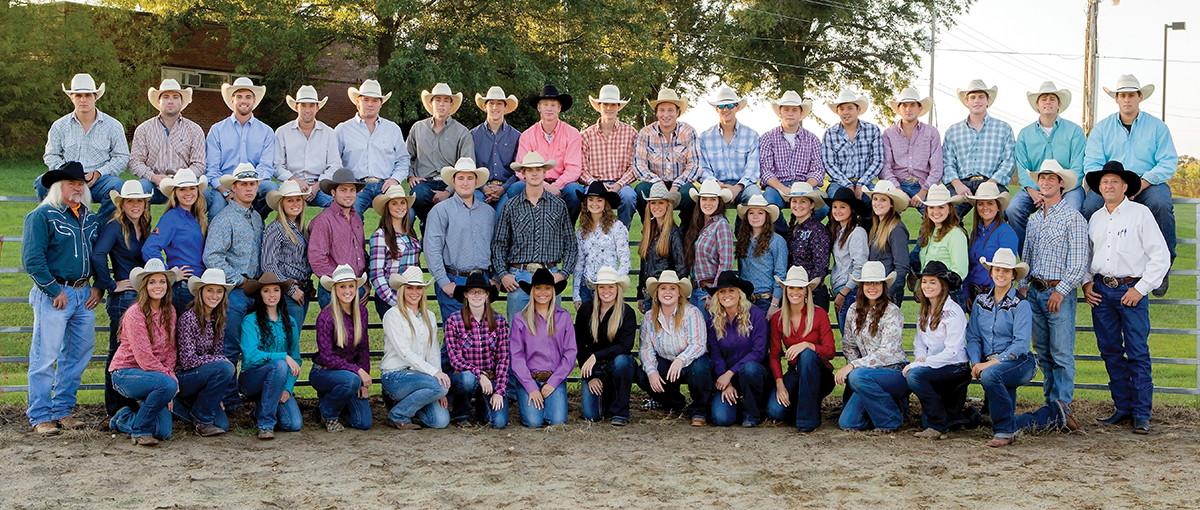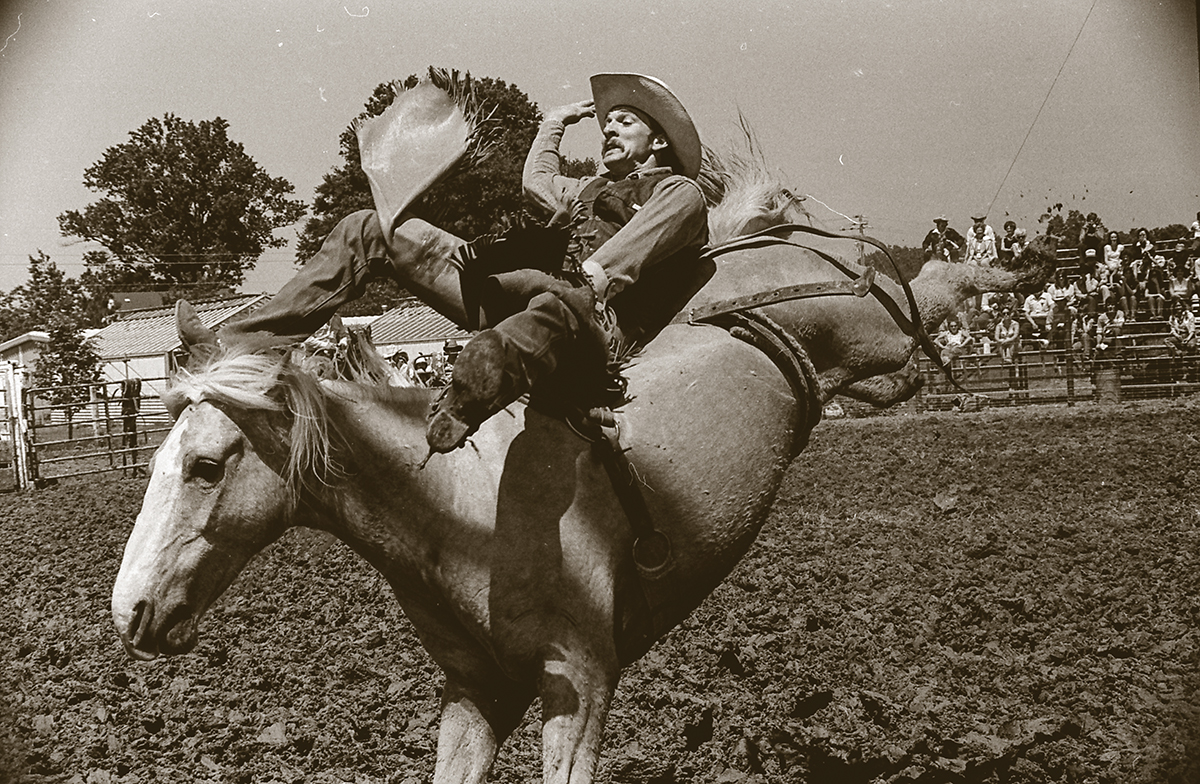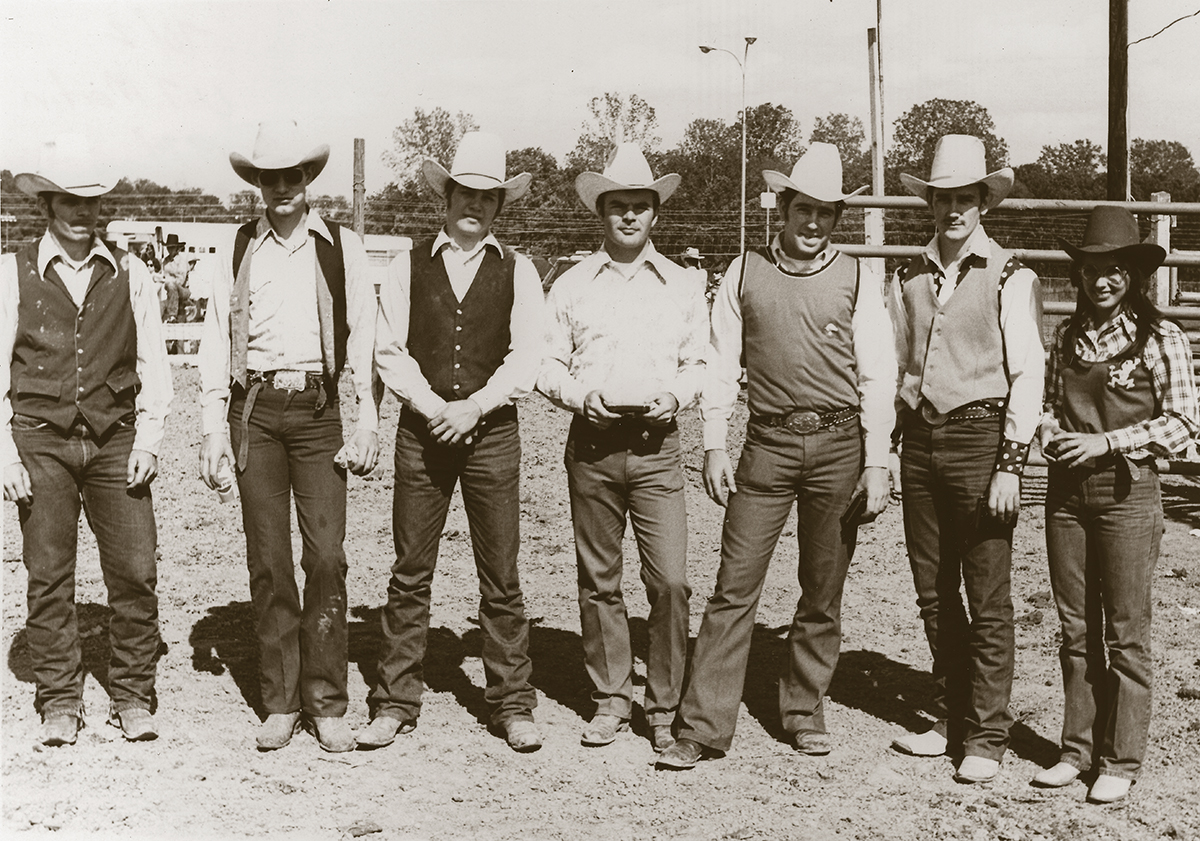By John W. Lacey
No cowboy had ever ridden this horse before. No one knew how he might come out of the chute, what his first move would be, how he would buck; even the stock contractor was bewildered by the creature.
Unsettled by the unfamiliar, UT Martin Rodeo Team coach John Luthi waited with clenched nerves. Behind the chute was a rank 1,400-pound bronc appropriately named Surprise and his rider, UT Martin sophomore Ty Atchison. They were the second-to-last ride of the night at the 2006 Collegiate National Rodeo Finals in Casper, Wyoming, and Atchison was sitting in second place.
Atchison had spent the past hour behind the chutes talking broncs with the other cowboys. The insight they give each other is normally critical to a successful ride, especially if you’re riding an unfamiliar horse.
“A guy always asks about the animal he’s got, just to give him an edge in the competition. If they know what he’s going to do before he does it, then maybe they can have a better ride,” Atchison says. “But absolutely no one could tell me anything about this draw. They had no idea.”
Without an understanding of the horse’s habits, Atchison (Martin ’08) went back to the basics Luthi had taught him. He went through his chute procedure and tried to visualize everything about the ride. He saw himself on the bucking horse, every jump and kick offset by rotating his body, keeping his rein tight with one hand and the other arm outstretched for balance. Before he ever gets on his horse, he’s already made the ride. Eight glorious seconds of ride are all that separate a bronc rider from receiving a score. To be bucked off before the eight is up nullifies the ride completely.
Atchison recalls: “I crawled across this big fire-breathing son-of-a-buck, got in the stirrups and grabbed the rein. I could feel him beneath me, feel him gettin’ tense. He’s breathing hard. Those younger horses are sweatin’ and fightin’. It’s nothing but blood, rushing blood. Adrenaline packed, to say the least.”
Then, after a tug of his hat, a nod of his head, the gate was flung open.
Surprise exploded. Bolting from the chute, he violently swooped his head around. The horse was quick and powerful. He lunged in the air, slamming his front hoofs hard into the dirt, kicking up something fierce with his hind legs. Surprise was as wild as they come. He didn’t do anything that Atchison had imagined. As the bronc pitched forward, Atchison threw his body back, shooting his stirrups up next to Surprise’s shoulders.

“Every muscle in my body was stretched, and I could feel the horse build up all his energy and then burst as hard as he can again and again. That feeling of that horse exploding and you being ahead of him and you trying to be in control, that’s what we live for,” says Atchison.
That night in Casper, Atchison stuck like mud on a pair of square toes (boots), but Surprise proved to be too much of an unpredictable animal for him to keep perfect form. He earned a score of 80 out of a possible 100 for the ride (50 points for the rider and 50 points for the bronc) and finished second that year. Surprise would go on to become what is known as an eliminator and wreaked point-dropping havoc for all the cowboys who dared saddle him up.
A bronc rider, like Atchison, is just one breed of the gritty men and women who make up the team sport of rodeo, and UT Martin boasts one of the best rodeo teams around.
How Rodeo Came to Martin
Initially formed as a club in the College of Ag in 1968, the Martin rodeo team from the beginning was in large part a student-built program. Six young men approached School of Ag faculty member “Doc” Robinson about forming the team. Under his leadership, the team staged and won the university’s first rodeo at a nearby horse ranch in 1969. In the late ’70s, the team moved the rodeo closer to campus. Franklin Pope (Martin ’79) was part of a group of students who built the first corrals at UTM.
“We were always begging for funding. Begging for this and begging for that, and they finally agreed to give us a spot on campus to have the rodeo,” says Pope. “It was in ’78 they cleared off this land for us. We found some pipe and borrowed a welder from the National Guard, and we built an arena right on campus. We had to get bleachers and lights. It was bare ground before we started on a Monday and finished up the arena that Friday at 5 before our rodeo started at 7:30 that night.”
That student club that begged for funding is now the defending national champion (and since 2004 an official sport in the UT Martin athletic department) and one of hottest shows in West Tennessee. More than 30,000 spectators flood the indoor McWherter Ag complex on campus for three days at Martin’s annual spring college rodeo.
Cowboys on Campus

Photo by Trevor Ruszkowski
Trimmed out in Western shirts, Wrangler jeans, boots and straw hats, the student team is as hard-working a bunch as you’ll find. Most grew up riding horses, laboring on farms and participating in Little Britches rodeo, junior rodeos and high school rodeos. Many will continue to rodeo after college in the Professional Rodeo Cowboys Association where the stakes are higher and so are the payouts.
In addition to saddle bronc riding, men’s events include bareback bronc riding, team roping, tie-down roping, steer wrestling and the roughest, most dangerous competition: bull riding. Women compete in barrel racing, team roping, goat tying and breakaway roping.
Life as rodeo team members is quite a bit different than their peers in other sports experience. From September to March, the team will pack up its gear, load horses into trailers and spend around 140 hours in trucks and cars traveling more than 7,200 miles to compete in 10 rodeos.
Rodeos start on Thursday and end Friday night with the “long round,” where contestants get the chance to compete in their event once. Saturday the top 10 from the “long round” come back and get to compete in the “short round.” Points are awarded to first through sixth place in the “long round,” “short round” and “average.” These student-athletes are professionals and can win money. The rodeos pay out the jackpotted entry fees to the No. 1-4 positions in the rounds and average for each event. No prize money is ever guaranteed.
Each team is allowed to enter the top six men and top four women, and only those 10 count for team points. The rest of the rodeo team can enter the competition, but their points will not be added to the team total.
When not traveling for the events, they are back in Martin being full-time college students. They practice their events every day, work out like any other athletic team and help take care of the livestock and the facilities that house them. That means cleaning out the horse stalls. Many hold down regular jobs, and all are expected to sell advertising for the spring rodeo program, which helps cover the cost of the event. All that regimented discipline earns them not only a physical and mental edge for their events but teaches them life lessons that extend beyond their days at Martin.

So what does it take to be on the UT Martin rodeo team? First off, a mind in the right place. Luthi is big on mental preparedness and focusing on the details. “If you’re worried about getting hurt, you likely will be,” is one of his favorite sayings. Rodeo is 90 percent mental and 10 percent physical. You’ll need the fortitude to practice, travel and compete—discipline to be a full-time college student and animal caretaker. You’ll need to love the sport, even when your body tells you to quit. It takes striving for a flawless ride, true grit and determination—having the guts to hop on a horse named Surprise while your teammates cheer you on.
Life after Martin
Seven years and several thousand miles later, Atchison is still bronc riding. Married and at 29 years of age, Atchison is running his own cattle ranch in Colony, Oklahoma. But, for 250 days of the year, he’s crisscrossing the country with fellow riders, picking up rodeos where and when he can with the ultimate aim of qualifying for the national finals in Las Vegas. For Atchison, that means 16- to 24-hour car rides all for 8 seconds with no guarantee of a paycheck. But it’s a thrill and experience that draws him back year after year.
That longing isn’t uncommon. Lyndise Brower Chatburn (Martin ’04), who was named Reserve National All-Around Cowgirl in 2004 and specialized in breakaway roping, team roping and goat tying, hopes to get into barrel racing one day. This wife, mother of two and delivery room nurse is currently finishing up her master’s degree as a family nurse practitioner in Idaho, where she and her husband farm and raise cattle and horses. Their two children, ages 5 and 3, are already riding horses in junior rodeos.
Pope rodeoed as a steer wrestler and team roper professionally between 1975 and 1992. He currently farms and raises beef cattle and row crops. Pope also met his wife through rodeo, and their two sons were on the Martin rodeo team coached by Luthi.

Cliff Goodrich (Martin ’82), a general contractor and developer in Jackson, Tennessee, still competes in tie-down roping and team roping events at about 50 to 75 rodeos a year. In his Martin days, Goodrich participated in steer wrestling, tie-down roping and team roping. One of Goodrich’s favorite memories of his time at Martin was spending time with mentor and friend “Doc” Robinson.
“He was a special man,” says Goodrich. “He cared about us kids, and we took him hunting with us, and it was a great relationship that we all had with him.”
Former professional bull rider David Vowell (Martin ’74) was on the first Martin rodeo team to go to the college finals in ’74. Now retired from the family lumber business, Vowell and Sons Inc., in Martin, he works with the UT Martin Rodeo Booster Club, an organization that raises money to pay for rodeo scholarships.
What drives these men and women to log 140 hours on the road, carry a full class load, work their tails off and risk physical injury without guarantee of pay?
Vowell, after recalling a dangerous ride from his college years on a 2,100-pound white Charolais bull that could have killed him, sums it up perfectly: “We all signed on to be tough.”
How to Talk Sensibly About Rodeo
Average: a contestant’s scores on all go-rounds; the competitor with the highest total wins
Barrel racing: a women’s timed event wherein she must race her horse around three barrels
Chute: a narrow, fenced pen for horses and bulls
Dink: in riding events, an animal that won’t buck
Goat tying: women’s-only event where a woman must dismount her horse, chase down a goat and tie three of its feet together
Low time: the winner in a timed event
Son-of-a-buck: you probably know this one
Stock contractor: provides livestock for a competition
Steer wrestling: a cowboy leaps from a horse onto a running steer and wrestles it to the ground





